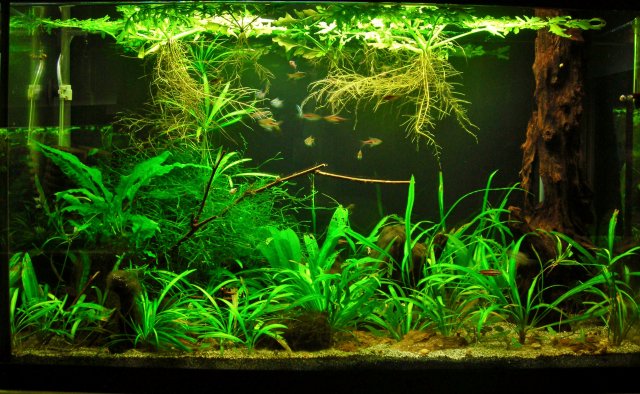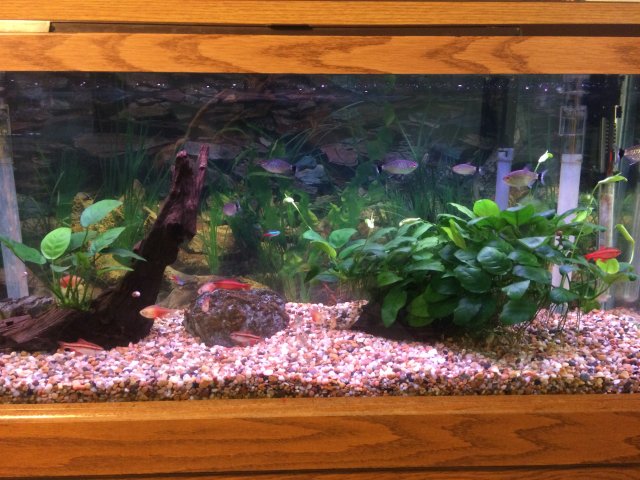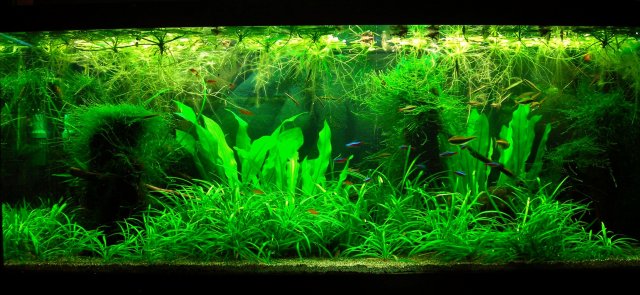If I may, I'd like to expand a bit on this colour issue and plant growth. It is true that aquatic plants require primarily red and blue light for photosynthesis; which is to say that these two wavelengths promote photosynthesis. The problem is that red does not penetrate water very well; blue does (hence its wide use in marine setups for corals). But the red has to be stronger in order to penetrate. Low light plants such as Anubias can manage under less intense light as several of us have mentioned, so the so-called "plant" or "aquarium" tubes that are primarily red and blue work. They give a purplish hue to the aquarium, which some like to see, though I do not. The colours of the fish and plants are not natural under this light; reds and blues are highlighted, yes, but the actual colours of the fish and plants are not rendered true. Again, this is a visual thing for the aquarist.
The problem arises when other more light-demanding plants are attempted under this light. Scientifically-controlled studies have shown that aquarium plants grew best under a mix of red, blue and green light. This intrigued the testers, since we all know that green plants reflect green light, and red and blue are essential for photosynthesis. Diana Walstad surmised that the improved plant response to the red/blue/green mix was probably due to the brighter intensity, and that seems to have been the answer. Comparing for example the Hagen "Glo" tubes, the Aqua-Glo is primarily red and blue, while the Life-Glo is red, blue and green. The light emitted by the Life-Glo is almost double in intensity by comparison. This is indicated on the labels in lumens, and while some will say this doesn't apply to the perception of light by plants, clearly it does.
I ran tests for over a year on my 29g tank, using these various tubes. The plants in the tank were chain swords, crypts, Jave Fern and Java Moss, and floating Water Sprite. The tank thrived for several months under a Life-Glo. I replaced it with the weaker tube, an Aqueon primarily red/blue, and the plants began to fail; I left this for five months, and the swords died, the crypts died, and the others struggled, even the floating plants right under the light. No other changes (fish stock, feeding, fertilizing, duration) were made. I added a new Life-Glo and within a few weeks I could see better growth from the remaining plants. These tubes were the same size, a single 24-inch T8 in all cases. There can be no doubt that the Life-Glo was more intense light.
Kelvin is one way to find the best light; in the afore-mentioned study, it was found that light with a Kelvin in the 6000K to 7000K range had the best response from the plants. The tubes with 6500K suit this well. They also render true colours, and not surprisingly are closer to the true colour of sunlight.
Byron.








